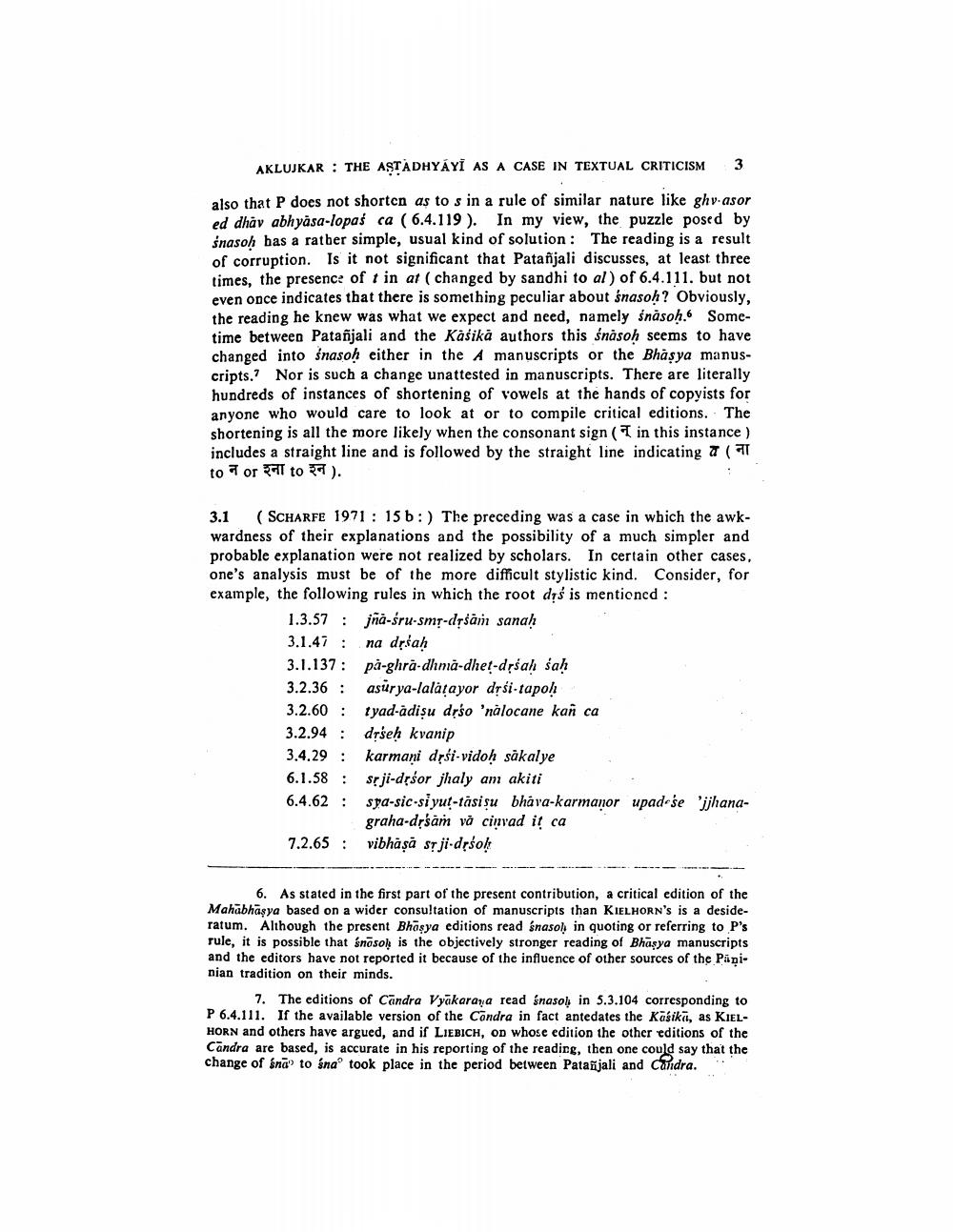Book Title: Astadhyayi As A Case In Textual Criticism Author(s): Ashok Aklujkar Publisher: Ashok Aklujkar View full book textPage 3
________________ AKLUJKAR : THE ASTADHYAYI AS A CASE IN TEXTUAL CRITICISM 3 also that P does not shorten as to s in a rule of similar nature like ghy asor ed dhav abhyāsa-lopasca (6.4.119). In my view, the puzzle posed by śnasoh has a rather simple, usual kind of solution: The reading is a result of corruption. Is it not significant that Patañjali discusses, at least three times, the presence of t in al ( changed by sandhi to al) of 6.4.111. but not even once indicates that there is something peculiar about śnasoh? Obviously, the reading he knew was what we expect and need, namely Śnāsoh. Sometime between Patanjali and the Kasika authors this śnāsoh seems to have changed into śnasoh either in the A manuscripts or the Bhasya manuscripts.? Nor is such a change unattested in manuscripts. There are literally hundreds of instances of shortening of vowels at the hands of copyists for anyone who would care to look at or to compile critical editions. The shortening is all the more likely when the consonant sign (Tin this instance) includes a straight line and is followed by the straight line indicating a to 7 or HT to 5). 3.1 (SCHARFE 1971 : 15b :) The preceding was a case in which the awkwardness of their explanations and the possibility of a much simpler and probable explanation were not realized by scholars. In certain other cases, one's analysis must be of the more difficult stylistic kind. Consider, for example, the following rules in which the root dyś is mentioned : 1.3.57 : jñā-śru-smp-dršām sanah 3.1.47 : na dršah 3.1.137: på-ghra-dhma-dhet-dịšah sah 3.2.36 : asurya-lalatayor drsi-tapoh 3.2.60 : tyad-adişu drso 'nālocane kan ca 3.2.94 : drseh kvanip 3.4.29 : karmani drsi-vidoh sākalye 6.1.58 : srji-drśor jhaly am akiti 6.4.62 : spa-sic-siyul-tasisu bhava-karmanor upad se 'ijhana graha-desăm và chạyad it ca 7.2.65 : vibhāşa spji-dršok 6. As stated in the first part of the present contribution, a critical edition of the Mahabhaşya based on a wider consultation of manuscripts than KIELHORN'S is a desideratum. Although the present Bhāşya editions read śnasoh in quoting or referring to P's rule, it is possible that śnosoh is the objectively stronger reading of Bhaşya manuscripts and the editors have not reported it because of the influence of other sources of the Paninian tradition on their minds. 7. The editions of Candra Vyakaraya read śnasol in 5.3.104 corresponding to P 6.4.111. If the available version of the Condra in fact antedates the Kasikii, as KIELHORN and others have argued, and if LIEBICH, OD whose edition the other editions of the Candra are based, is accurate in his reporting of the reading, then one could say that the change of sna' to śna took place in the period between Patañjali and Candra.Page Navigation
1 2 3 4 5 6 7 8 9 10
